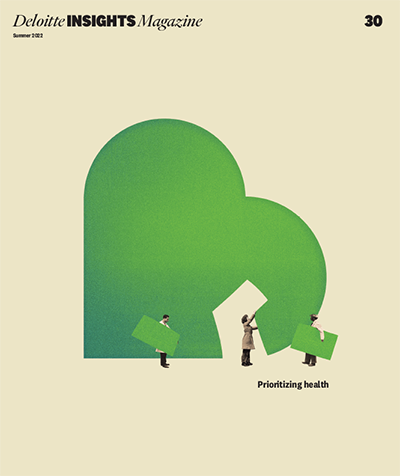Ensure data security:Data security is one of the biggest concerns keeping the light mobile banking users (who used mobile banking app at most once in a month last year) on the fence. Moreover, consumers’ anxiety over customer privacy, for instance how much of their personal data is protected and private, is reaching a fever pitch.23 Ongoing advances in technology, including application programming interfaces, AI, 5G, and data sharing are further fueling these concerns, as the security of banks’ complex, interconnected ecosystem is only as strong as the weakest link. A cyberattack on any of the banks’ vendors or fintech partners could expose the security of their own enterprise at risk.
Now arguably, banks are taking the appropriate measures, as cybersecurity continues to top their technology spending priorities.24 But perhaps they should pay attention to consumers’ “perception of security and privacy.” One-third of our survey respondents agreed they would use more mobile apps if their banks strengthened mobile data security. A similar proportion of at-risk consumers would stick with their primary banks if banks kept their identity and information secure (figure 4).
Banks should design targeted communication campaigns on the security and privacy features in their digital banking offerings and guide consumers on the leading practices of securely using digital banking.
Communicate with integrity and honesty: One-third of our at-risk survey respondents would appreciate consistent, transparent communication from their banks, such as on fees and interest rates (figure 4). Younger consumers value it even more: Forty-seven percent of Gen Z at-risk consumers mentioned their banks can retain them by maintaining consistent and transparent communication. This is also part of “humanizing” the banking experience, to communicate with integrity across digital and physical channels and engender trust.
According to a marketing research firm, Gen Z values attributes like being “honest” much more than “provides useful information.”25 And perhaps this is one of the areas where digital-only banks and fintechs score over traditional institutions.26 Bridging this gap and winning the hearts of at-risk consumers can start with a small but impactful step: Phase out the “fine print” and embrace clarity in communicating with consumers.
Reinforce financial wellbeing with customer education: One-quarter of our at-risk respondents are interested in educational resources and tools to become financially savvy (figure 4). Moreover, about one-third of our Gen Z and millennial respondents also agreed that they’d use mobile apps more if their banks educate them on various products, services, and financial behaviors (such as debt management) to achieve their short- and long-term goals. Banks are uniquely qualified to reinforce financial wellbeing, but this can only happen if consumers are financially literate. So financial education, especially among the younger cohorts, should remain a top priority.
To appeal to their younger customer base that spends a significant amount of time on social media, banks should experiment with fresh approaches, such as influencer marketing, over more traditional marketing techniques.27 Bank of America, for instance, invited a group of influencers to a “Better Money Habits Retreat” in Miami in 2019 to share insights on money management especially targeting millennials.28 In addition, the bank maintains a dedicated website covering a host of tools and resources on savings and budgeting, homeownership, building credit, and retirement among other topics.29 As many banks have started to invest in raising financial literacy, clearly defining these metrics to gauge the change in consumers’ financial wellbeing, such as the increase in savings rate among users of these tools, would be important to measure the return on their investments.
Beginning a sticky chapter in the evolution of digital banking
Digital banking is entering a new chapter in its evolution. Consumers are much more aware of digital banking features and many first-time users have grown comfortable using them, at least for their transactional banking needs. Moreover, the banking landscape is shifting from “no choice but embrace digital” to “digital by choice,” as branches reopen across the country.
While consumers are going to exercise their choice in different ways, it appears that use of digital banking is likely to continue for simple, transactional activities. Yet banks have an opportunity to humanize digital experiences to further make these digital banking behaviors stick.
Digital banking can also play a role in winning over at-risk younger consumers. It can be positioned at the heart of personalizing consumers’ day-to-day interactions and elevating their financial wellbeing. Banks are uniquely positioned with the right tools and resources to educate consumers on, and help them embrace, more responsible financial behaviors.
However, they shouldn’t lose sight of the human touch, especially for complex interactions where conversations and advice are integral to making milestone decisions and overcoming stressful moments in consumers’ financial journeys.
The flexibility to therefore use “channel(s) of choice” and yet get a consistent, meaningful banking experience would influence the stickiness of overall banking relationships in the future.










